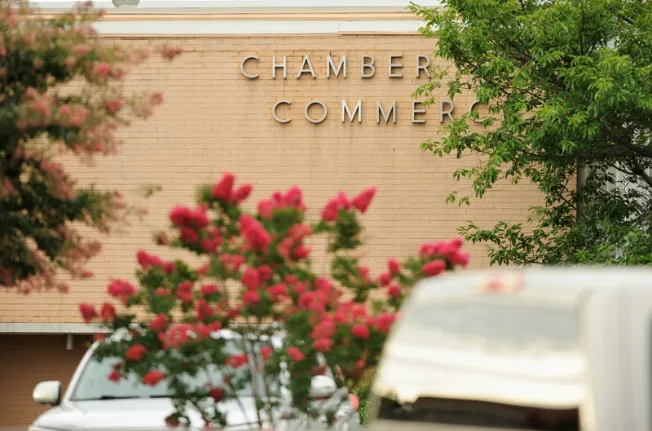
Rediscovering the Value of Chambers of Commerce
In the age of instant connectivity, online communities, and hyper-targeted lead generation, the local Chamber of Commerce may feel like a relic from a different era. Once the default hub for business owners, Chambers across the country are struggling with declining membership, waning relevance, and competition from more agile, niche networking groups. Entrepreneurs are questioning: why join the Chamber when I can get leads from Facebook groups, attend free webinars on YouTube, and network through curated events or private masterminds?
But before you dismiss your local Chamber as outdated, it’s worth taking a second look. Because the truth is, Chambers are quietly evolving—and for small businesses looking to grow locally, influence policy, and connect with real decision-makers, they may be more important than ever.
The Original Public-Private Partnership
At their best, Chambers of Commerce serve as a kind of public-private partnership. While they aren’t government agencies, they often work closely with city and county leaders to shape economic development, influence regulation, and serve as a bridge between the business community and the public sector.
Need permits expedited? A Chamber can help you find the right contacts. Confused about local zoning changes? They often have a seat at the table before the rest of the business community even hears about it.
In times of crisis—like a natural disaster or economic shock—Chambers often coordinate recovery resources and advocate for local business needs. During the COVID-19 pandemic, many Chambers became ground-zero for PPP information, grant access, and business continuity support. That kind of institutional access and coordination doesn’t come from your typical networking group.
Advocacy That Actually Reaches the Right Ears
Most small business owners don’t have the time, bandwidth, or political connections to influence legislation, regulations, or funding programs on their own. Chambers fill that gap.
They advocate for policies that affect everything from local taxes and signage ordinances to workforce development and transportation infrastructure. And because they represent a collective voice, Chambers often have more influence than any single business ever could.
In short: while you’re busy running your business, your Chamber might be fighting behind the scenes to keep your business environment healthy.
Beyond Leads: Building Long-Term Business Equity
Yes, there are faster ways to generate leads. But not every relationship should be transactional. One of the greatest (and most overlooked) values of Chamber membership is relationship equity.
When you’re active in a Chamber, you don’t just meet people—you become known in the community. You show up consistently. You build a reputation. You’re seen as someone who invests in local growth. And that kind of social capital opens doors far beyond the next lead. It opens invitations to speak, collaborate, sit on boards, and be top-of-mind for opportunities that aren’t publicly listed.
This is particularly important for service-based businesses that rely on trust and local credibility. Real estate professionals, lawyers, consultants, IT providers, financial advisors—many of them trace their biggest clients not to cold leads but to long-term, high-trust relationships built within community ecosystems like Chambers.
Relevance Requires Reinvention—And Many Chambers Are Rising to the Challenge
Of course, criticism of Chambers isn’t unfounded. Some still run outdated programming, offer little value beyond mixers, or lack diversity and innovation. But many forward-thinking Chambers are undergoing reinvention. They’re:
Hosting pitch competitions and small business expos.
Offering educational content on AI, cybersecurity, marketing, and more.
Forming specialized subgroups for young professionals, minority-owned businesses, and women in leadership.
Partnering with economic development agencies, universities, and corporations to launch incubators, grant programs, and innovation hubs.
In essence, they’re becoming platforms—not just for networking, but for learning, visibility, and influence.
The Power of Local: Why Digital-Only Isn’t Always Enough
The internet gives entrepreneurs global reach, but many businesses still live or die by their local roots. Whether you own a boutique, restaurant, consulting firm, or professional service company, local visibility and trust matter.
Search engine rankings can get you clicks. Paid ads can get you impressions. But being involved in your local Chamber can get you something harder to buy: presence.
It’s one thing for someone to find your business online. It’s another for them to say, “Oh yeah, I saw her speak at the Chamber,” or “He’s on the small business task force downtown.” That kind of real-world credibility doesn’t show up in your analytics dashboard—but it shows up in referrals, trust, and staying power.
Is a Chamber Right for You? Ask These Questions
Not every Chamber is created equal, and not every business will benefit in the same way. Before joining, consider:
Is the Chamber active in the areas that matter to me—advocacy, education, visibility?
Do they offer opportunities to contribute, not just consume?
Are they connected to local decision-makers and public agencies?
Do they support businesses like mine (size, industry, demographics)?
Do I see opportunities to build trust and long-term influence—not just leads?
If the answer is yes to even a few of these, your local Chamber might be a powerful (and underutilized) asset.
Like any tool, a Chamber only works if you use it. Paying your dues isn’t enough. Show up. Volunteer. Speak on panels. Sit on committees. Introduce yourself. Show others what you bring to the table.
Chambers are evolving from stodgy institutions into dynamic community engines. They’re still one of the few places where business, government, and community intersect—and for the savvy small business owner, that intersection is exactly where opportunity lives.
In a world obsessed with clicks, scale, and speed, sometimes the smartest move is to slow down, go local, and get involved.
The Chamber isn’t dead. It’s just waiting for people like you to bring it back to life.



